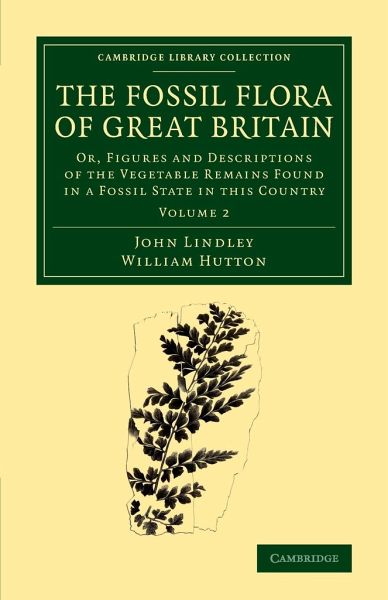
The Fossil Flora of Great Britain
Or, Figures and Descriptions of the Vegetable Remains Found in a Fossil State in This Country
Versandkostenfrei!
Versandfertig in 1-2 Wochen
46,99 €
inkl. MwSt.
Weitere Ausgaben:

PAYBACK Punkte
23 °P sammeln!
Employed early on in his career by Sir Joseph Banks, the botanist John Lindley (1799-1865) went on to conduct important research on the orchid family and also recommended that Kew Gardens should become a national botanical institution. This pioneering three-volume work of palaeobotany, first published between 1831 and 1837, catalogues almost 300 species of fossil plants from the Pleistocene to the Carboniferous period. The geologist and palaeontologist William Hutton (1797-1860), with whom Lindley collaborated, was responsible for collecting the fossil specimens from which the 230 plates were ...
Employed early on in his career by Sir Joseph Banks, the botanist John Lindley (1799-1865) went on to conduct important research on the orchid family and also recommended that Kew Gardens should become a national botanical institution. This pioneering three-volume work of palaeobotany, first published between 1831 and 1837, catalogues almost 300 species of fossil plants from the Pleistocene to the Carboniferous period. The geologist and palaeontologist William Hutton (1797-1860), with whom Lindley collaborated, was responsible for collecting the fossil specimens from which the 230 plates were drawn. The first serious attempt at organising and interpreting the evidence of Britain's primeval plant life, this resource is notable also for its prefatory discussion of topics such as coal seams and prehistoric climate. Volume 2 opens with a preface on coal, followed by descriptions of some of the fossil plants found therein (plates 80-156).




